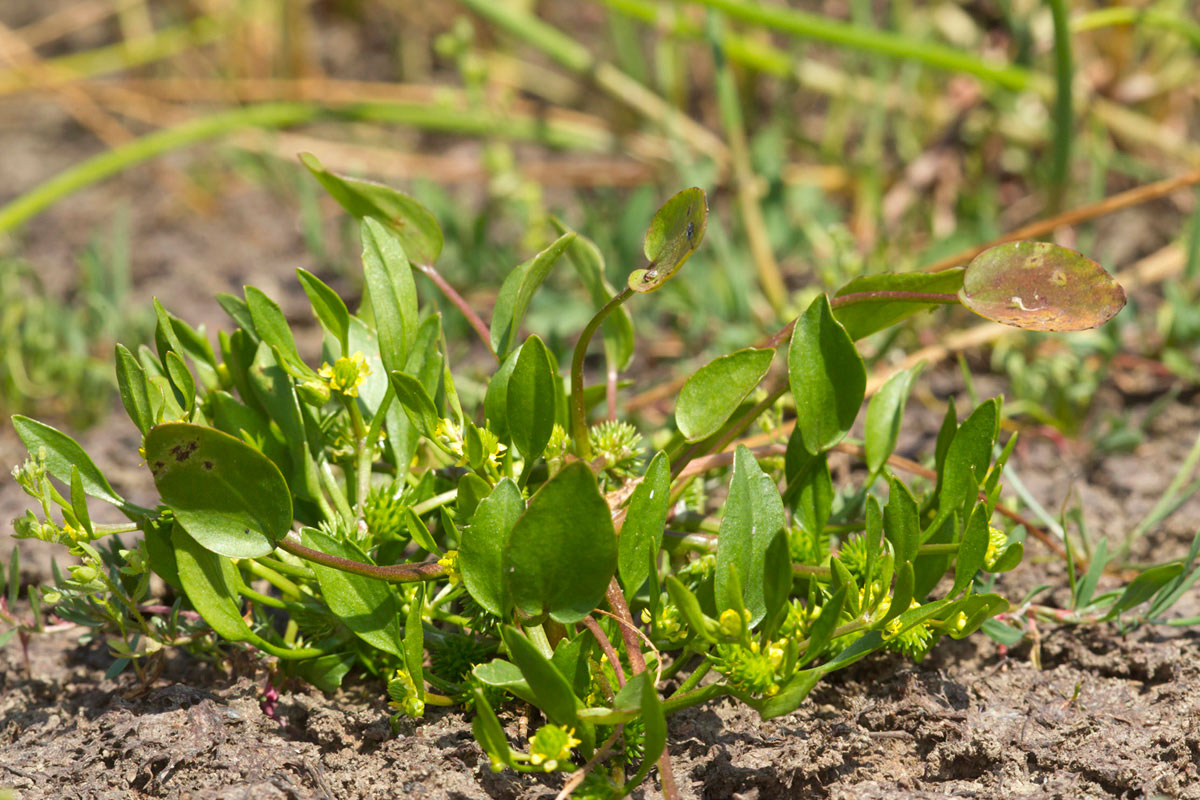Main menu
Conservation of priority forests and forest openings in "Ethnikos Drymos Oitis" and "Oros Kallidromo" of Sterea Ellada, LIFE11 NAT/GR/1014
Actions
Action A.3: Determination of vegetation structure and of flora and fauna composition and phenology in the Mediterranean temporary ponds (3170*)

This action concerns the biotic component of the Mediterranean temporary pond ecosystems of Mt. Oiti and Mt. Kallidromo. It includes a base study which will define the reference state of the biotic communities (plants, amphibians, and invertebrates) and a follow up study during the second year of the project which, in combination with the hydrogeological study data (action A.2), will assess the amplitude and frequency of natural variations in the biota.
Plants: Vegetation structure and flora composition will be studied by 1–3 transects placed so as to cover the spatial succession of the communities of each pond, depending on their area, bathymetry and duration of flooding. Cover-abundance of all flora species will be recorded in quadrats set along the transects. In temporary ponds there is also a seasonal succession of plant communities which follows the water level changes from the wet to the dry phase, so sampling will take place 2–4 times annually, depending on the hydrological characteristics of each pond. In addition, the phenology (germination, growth, flowering, fruiting, dispersal) of the characteristic plants (e.g., Myosurus minimus, Ranunculus lateriflorus, Corrigiola littoralis) will be recorded by monthly or bimonthly observations, and phenological diagrams will be drawn. The phenology of the priority plant Veronica oetaea* will be studied in detail in Action A.4. The results, coupled with the hydrogeological study data (action A.2), will be used in order to describe the vegetation zonation and succession at each pond, identify the characteristic and keystone species of the different plant communities, and determine their relation to the abiotic factors and to their seasonal and interannual variation.
Amphibians: The amphibians that have been found at the temporary ponds of Mt. Oiti and Mt. Kallidromo are the Annex II 92/43/EEC species Bombina variegata and two species protected by the Bern Convention: Ichtyosaura (Triturus) alpestris and Bufo viridis. The inventory will include larvae sampling by pond net during a specified period in all possible microhabitats, survey of eggs, trapping of adults, and detection of reproductive sites through the identification of mating calls. Surveys will be monthly from spring till the autumn.
Invertebrates: The invertebrate fauna of the temporary ponds of Mt. Oiti and Mt. Kallidromo is unknown. The freshwater invertebrates that are expected to be present in temporary ponds belong mainly to flatworms (Phylum Platyhelminthes), roundworms (Phylum Nematoda), rotifers (Phylum Rotifera), leeches and freshwater oligochaetes (Phylum Annelida), snails and mussels (Phylum Mollusca), crustaceans (Subphylum Crustacea) and insects (Subphylum Hexapoda). Population surveys will be carried out in sampling quadrats using pond nets and hand collecting. Flying adults of freshwater insects will be surveyed using transects. All surveys will be carried out from spring till autumn.
The results for all the three organism groups, plants, amphibians and invertebrates, will be analysed and possible interactions identified.
There is hardly any data on the composition, structure and function of the biotic communities of the ponds in the study sites. This knowledge is essential for sound management and will identify possible problems (e.g., caused by predation and competition). It is not possible to specify where, with which species, or how, restoration of the communities (action C.4) will be implemented, if their current situation and relations to abiotic factors are unknown. Also, it is not possible to monitor the results of the conservation actions (action D.1) if the initial status of the biotic communities is unknown. This is true for any type of biotic community, but even more so for temporary ponds which present high spatial and temporal variation. In addition, action A.3 will help in the selection of the minimum required parameters for after-LIFE monitoring.
The survey of the biotic communities of the ponds should extend to at least 2 years due to the large interannual variations in hydrology (see action A.2). The vegetation is organised in belts along hydrological gradients. Thus the interannual variation of hydrology causes variation in the spatial succession of plant communities. Moreover, strong interannual variations can also occur in breeding of the amphibians. Data on the interannual, seasonal and spatial succession and phenology of the biota are necessary in order to implement action A.3 and draw specifications for the grazing regime (action C.3).
The survey of the protected amphibians is necessary because:
-
The temporary ponds are essential for the survival of Ichtyosaura (Triturus) alpestris and Bombina variegata and determinant for the survival of Bufo viridis;
-
The amphibians are excellent bioindicators as they are very sensitive to physical disturbance.
The survey of the invertebrates is necessary because they consist an important part of aquatic biocenoses (e.g., insects constitute from 60–70% of the total number of species present over a complete hydrological cycle).
-
A report for the habitat of temporary ponds in Mt. Oiti and Mt. Kallidromo describing the plant and animal communities as well as their interactions and seasonal and spatial variation, including the results of the base study which will be delivered at the end of the first year of the project.
-
A report for the habitat of temporary ponds in Mt. Oiti and Mt. Kallidromo with the interannual changes in the animal and plant communities, which will be delivered at the end of the second year of the project.
-
Specification of a monitoring protocol for the habitat of temporary ponds for action D.1 and for after-LIFE monitoring.
-
Feasibility study and specifications for the conservation of temporary ponds (3170*): restoration of biotic communities (Action C.4).













